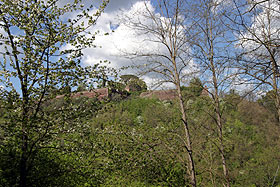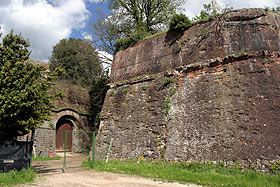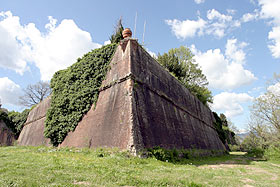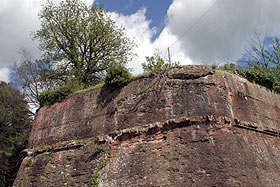S.Martino Fortress
 |
 |
Left: The fortified hill. |
The fortress crowns a hill overlooking the town of San Piero a Sieve. From Florence it can be reached following the 'Bolognese Road' until S. Piero a Sieve were its possible to find the indications for the 'Fortezza Medicea' (Medicean Fortress). This area of the 'Mugello' is reachable also from the Motorway A1, exit 'Barberino'.
Click here for a Map
 |
Responsible of the project was one of the greatest architects of that time: Baldassarre Lanci, the man responsible for the fortifications of Grosseto, Siena and Radicofani. The construction began the 30th of June 1569. Two years later Lanci died and Bernardo Buontalenti took his place. Beacuse of the greatness of the works, the fortress was completed only in the year 1608, under the reign of Ferdinand I. S.Martino its considered the most extensive Italian fortifications of all times.
 |
This inner fortress is positioned near the Florentine gate. Inside there were also wind mills, barracks, arms and munitions deposits, cisterns, workshops for the construction and reparation of fire arms and a chapel.
 |
The greatest Italian fortification of the Renaissance lies abandoned, like a dying giant lying down on the hill. The actual good state of conservation is granted to the high quality of the construction and not by human interventions; the fortress is visible only from the outside.
| View a Map |
| Back to Homepage |
| Back to Castles Index |